This article explores the benefits of marine biology internships and features examples of GVI's marine conservation programs. Learn more!
Petrina Darrah
Posted: May 15, 2025

Posted: June 26, 2019
A visitor from the deep blue
Seeing a Whaleshark and a Manta Ray underwater – every scuba divers dream! You turn around, looking away from the reef into the deep blue and suddenly seeing one of these gentle giants appear. You either hold your breath or start screaming at your dive buddy underwater to turn around and look what just appeared out of the deep blue.
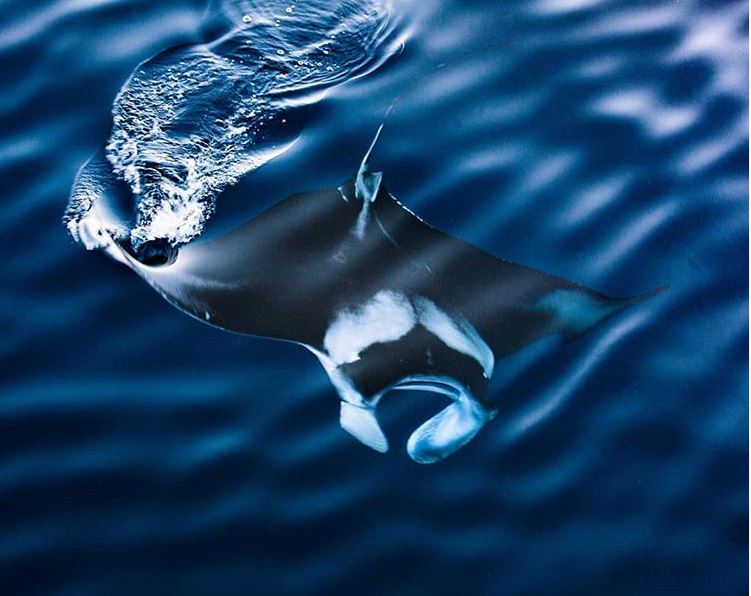
Here in the Seychelles, we are lucky enough to encounter both. While they are extremely rare, between June and September we are normally in luck and spot a few of them either from the boat or underwater.
Research in the Seychelles
For whale sharks, the Marine Conservation Society Seychelles has done extensive research on them for years. Using Photo ID, they were able to track them, identify individuals and see which ones are site faithful (i.e. returning to the Seychelles every year) and see where else they migrate to. Most of the individuals here are juveniles, between 3-7m long. They tend to migrate to the Seychelles during the summer and autumn months before heading north to the gulf of Djibouti for Christmas.
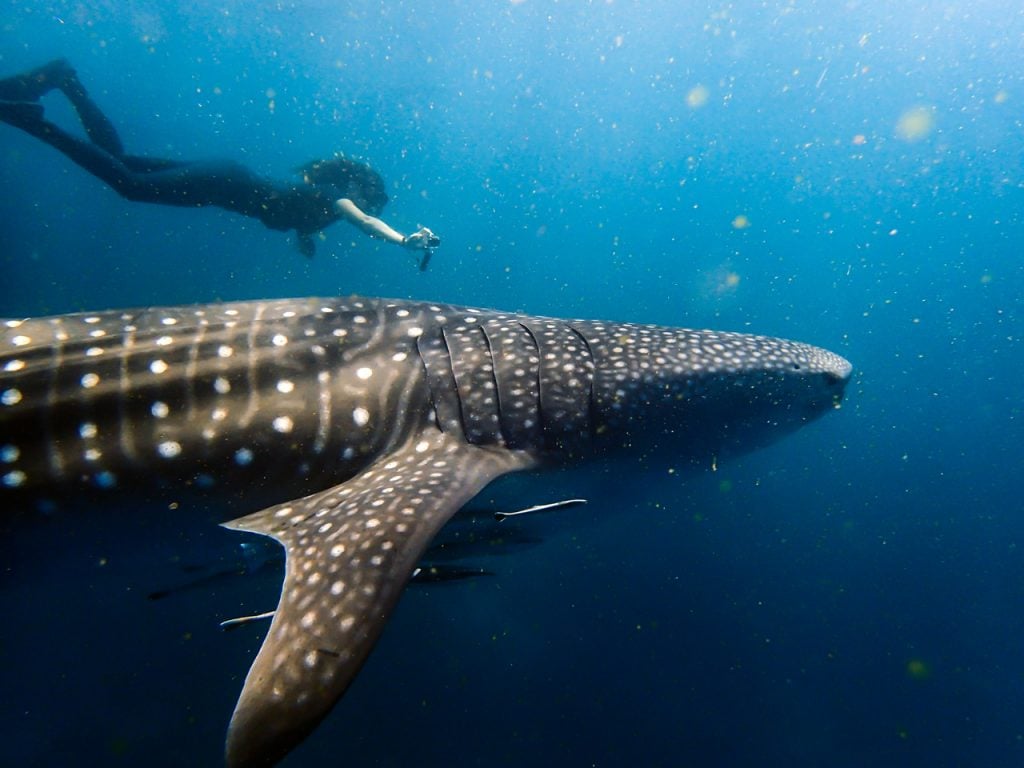
Manta rays on the other hand are much rarer. The Manta Trust has an outpost on D’Arros island after reliable manta ray populations were identified in the Seychelles’ Outer Islands. Off D’Arros and Desroches, they are seen frequently throughout the year, often feeding in deeper water during the day then coming up to the surface in the afternoon.
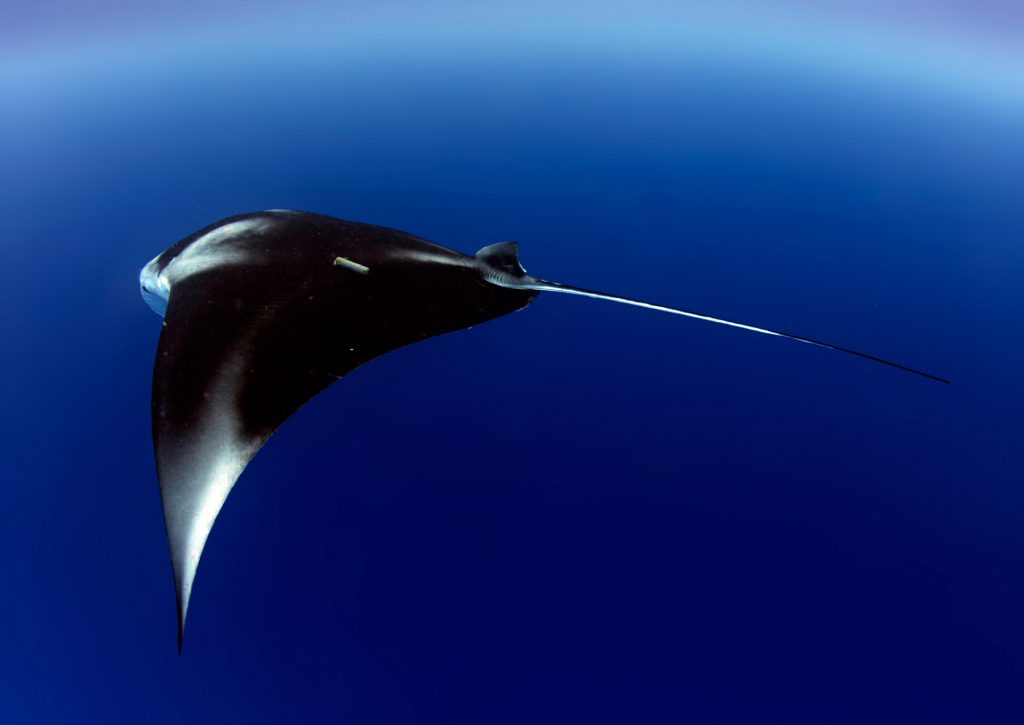
ID’ing them – its all about perspective
Both whales harks and Mantas can be ID’d by using photo identification software. Who’s seen a Whaleshark before usually first notices the white spots and stripes on their body. It was found, that each Whaleshark has an Individual pattern on, just like a human fingerprint. With the help of highly specialised software, researchers can run pictures of the animals through different programs and see whether it’s a new individual or if the pattern matches one previously seen and logged.
The best area to do this for whale sharks are the flanks, between the head of the shark and the pectoral fins.
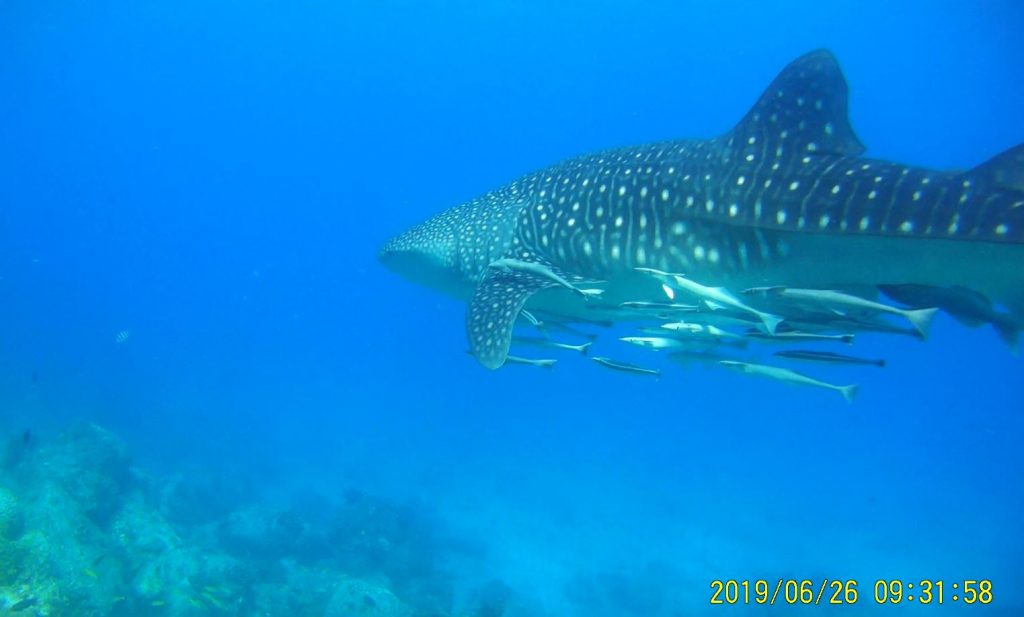
Manta Rays on the other hand are a lot plainer coloured, usually black and white. However, if you are lucky enough to see ones belly, you can see that they are covered in spots and blotches. Now same as the whale sharks, they have individual patterns on their bellies which once photographed can be used to differentiate between individuals.
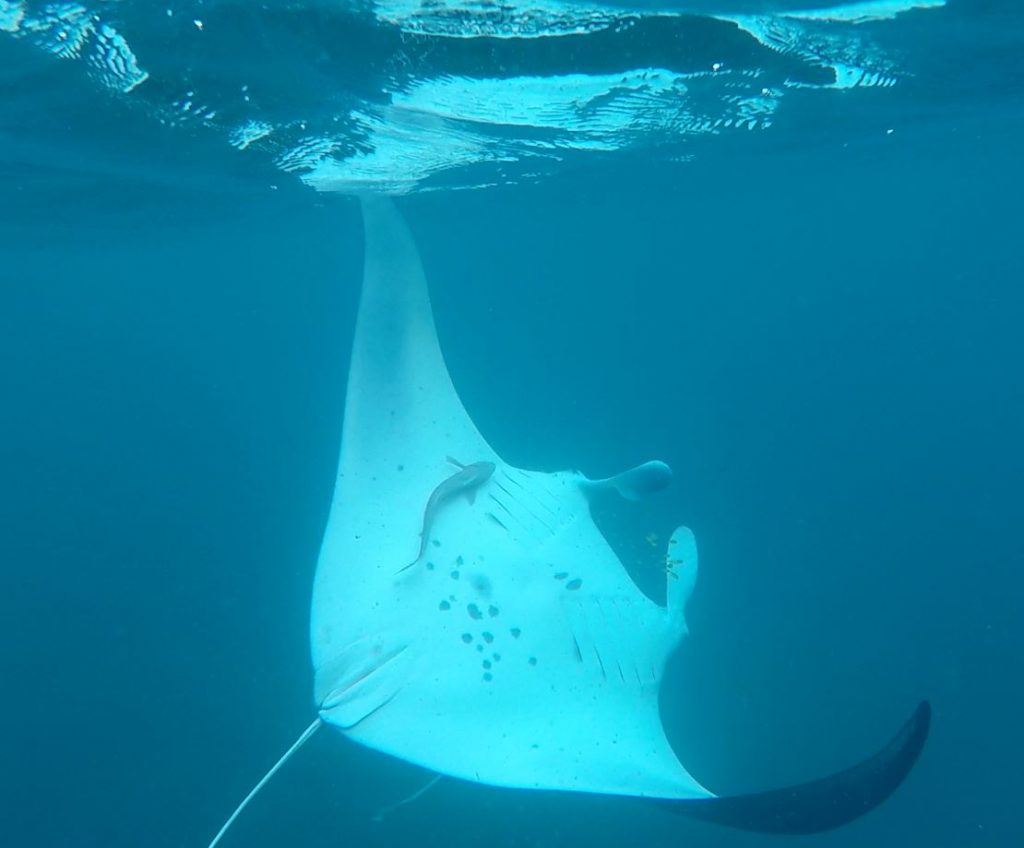
How can you get involved?
Grab your camera and try and get that shot! If we are lucky enough to spot one from the surface, we encourage our volunteers to grab their fins, masks and cameras and get in the water with them. We ask them to carefully approach the animals and try and get the shots that we need. Once back on base, we upload them to the Manta Trust website for the Manta Rays and send the Whaleshark pictures to the MCSS. And you can do the same, try and get the right shot and just get in touch with the organisations.
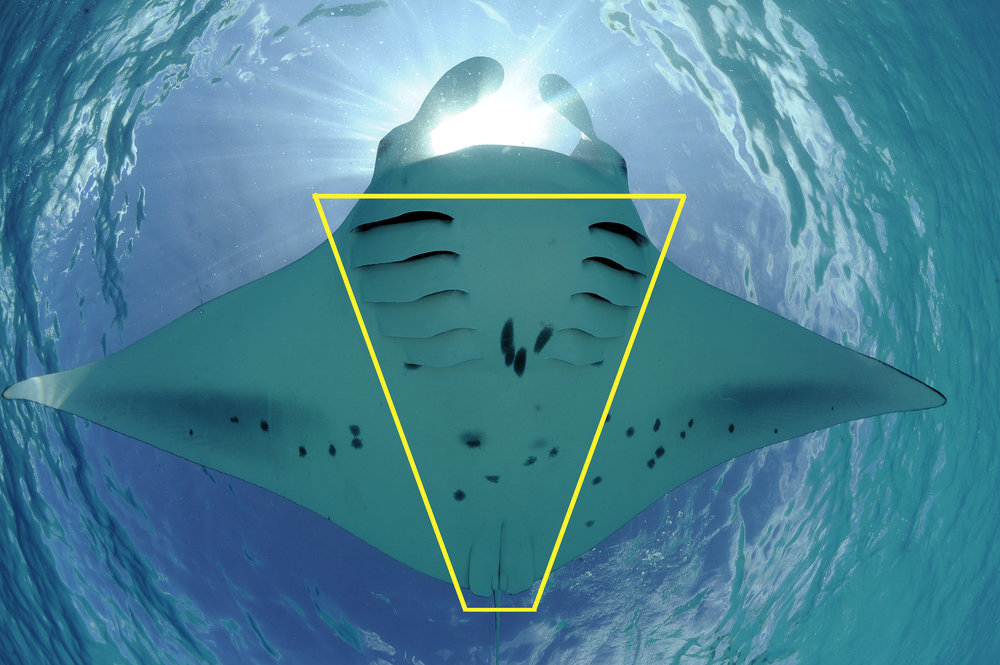
A few things to consider
As always – DON’T TOUCH THE MARINE LIFE. Even if you can keep up with them (believe it or not, they are a lot faster than you think), make sure to never get to close. Our aim is to observe, not disturb. We tell our volunteers to keep a radius of a few metres around the animals to make sure we do not alter their behaviour and get in there way. As some of the MCSS volunteers will be able to tell, getting hit by the tail of a whale shark the size of a boat is like getting hit by a bus, you can be lucky if get away without any serious injuries!
And most of all – enjoy the moment. Seeing one of these gentle giants is an extreme privilege in the 21st century. Being under extreme pressure from bycatch due to fishing and with almost nothing being known about whale shark migration patterns and reproduction, every encounter is a memory of a lifetime. Cherish the moment!
This article explores the benefits of marine biology internships and features examples of GVI's marine conservation programs. Learn more!
Petrina Darrah
Posted: May 15, 2025